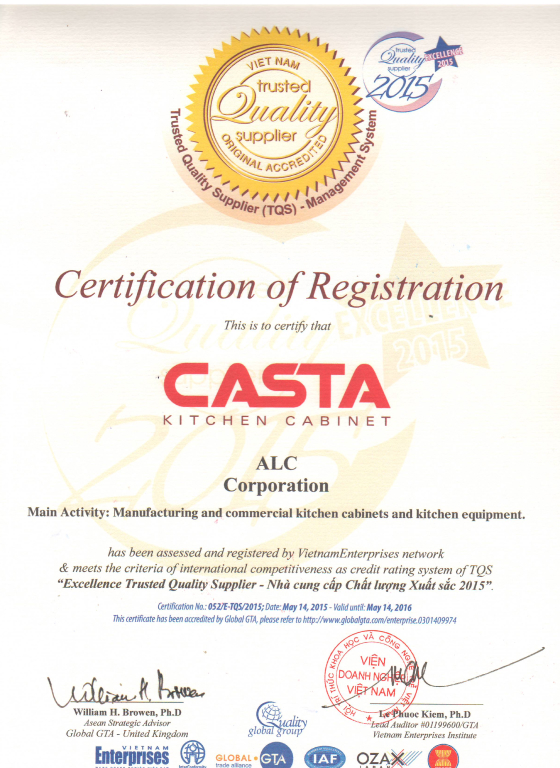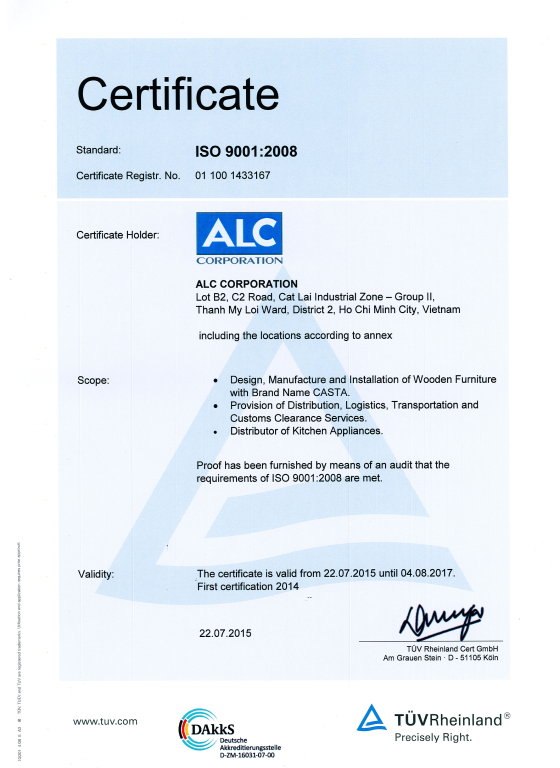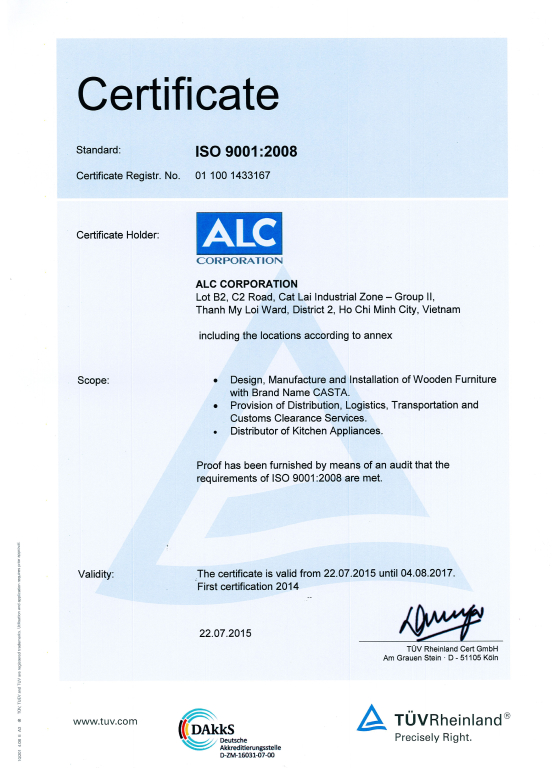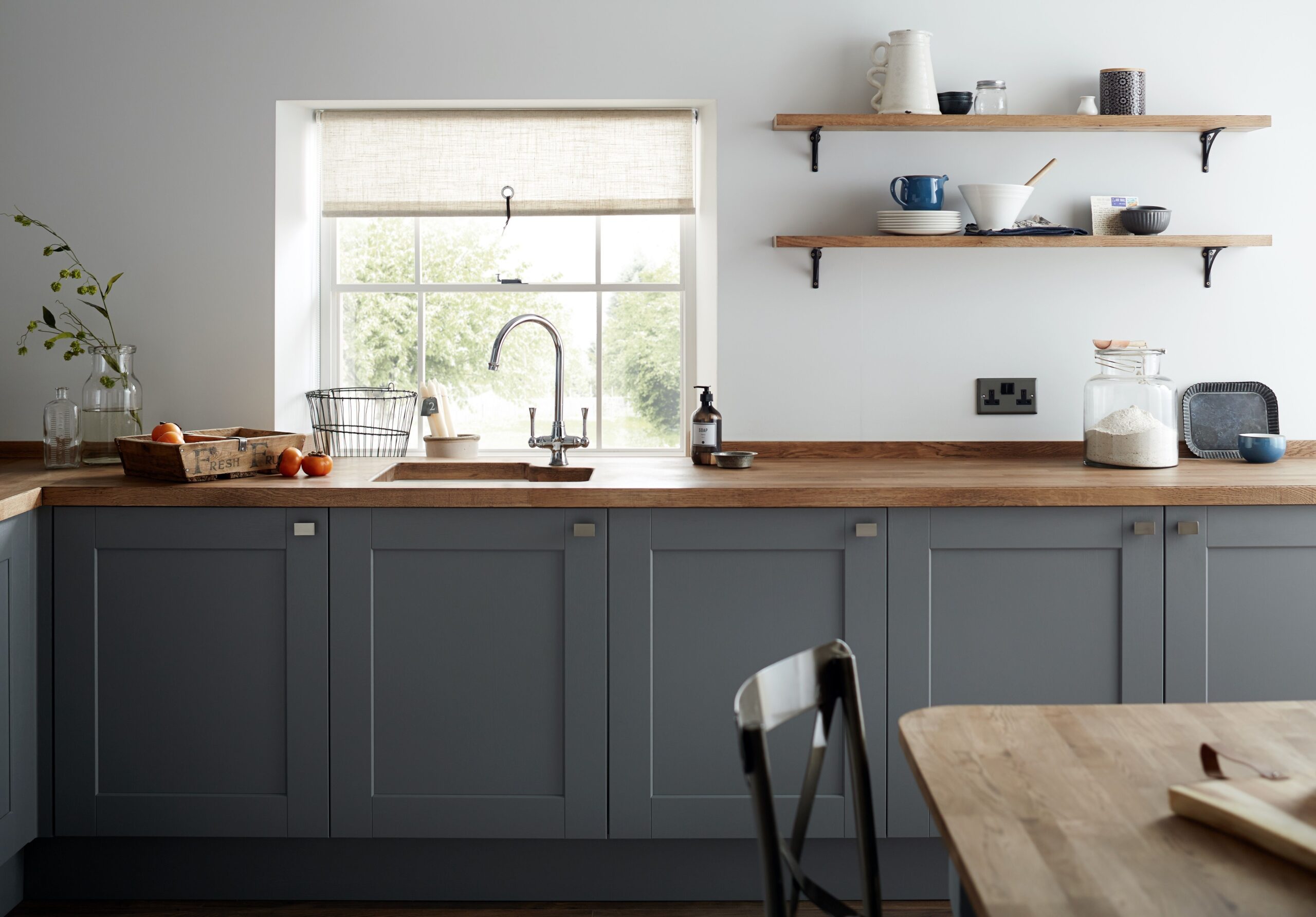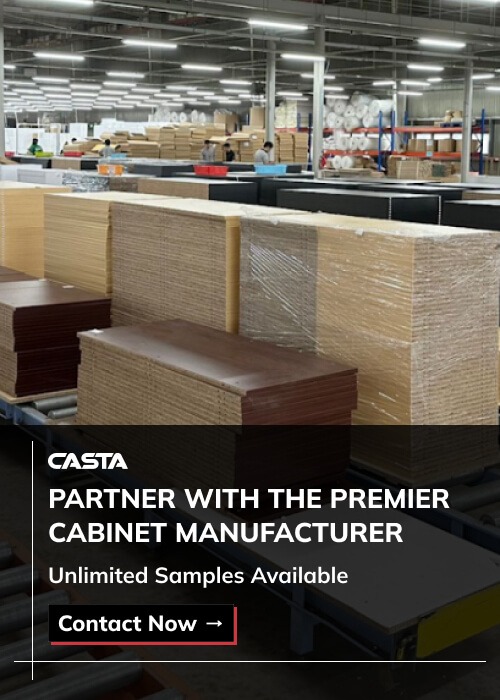Whether you're a contractor, cabinet brand, or procurement manager, learning how to buy kitchen cabinets can make or break your project's profitability and functionality. With rising labor and material costs in North America, sourcing from Vietnam has become a game-changer. In this comprehensive guide, we'll help you determine where to buy kitchen cabinets—domestically or by importing—covering budget, quality, delivery, and compliance. If you're wondering what is the best place to buy kitchen cabinets, or even where to buy used kitchen cabinets, the insights here will clarify your options and provide a roadmap for success.
Table of Contents
1. Seven Data-Backed Reasons to Import Cabinets from Vietnam
For contractors and cabinet brands evaluating how to buy kitchen cabinets without overspending or compromising on quality, Vietnam offers a proven, scalable solution. Here are seven reasons why sourcing from Vietnam is becoming the preferred choice across North America.
1.1 Price Advantage Without Sacrificing Quality
Vietnamese cabinets typically cost $120–$280 per linear foot, including tariffs and shipping—compared to $200–$400 per linear foot when sourcing from U.S. custom shops. This pricing advantage answers a critical question for many professionals: how to buy kitchen cabinets affordably while maintaining build and finish quality.
- Efficient labor and material usage lowers production costs.
- Knockdown packaging (RTA format) optimizes freight.
- Container consolidation lowers shipping overhead per unit.
1.2 European Machinery = Consistent Finish
Manufacturers in Vietnam use HOMAG, SCM, and Biesse CNC lines to ensure ±0.1 mm cutting precision, consistent edge-banding, and flawless drill alignment. For buyers wondering how to buy kitchen cabinets with guaranteed quality across large volumes, this level of automation ensures uniformity and reliability.
- Precise tolerances reduce installation issues on-site.
- High gloss, UV, and PU coatings maintain long-term durability.
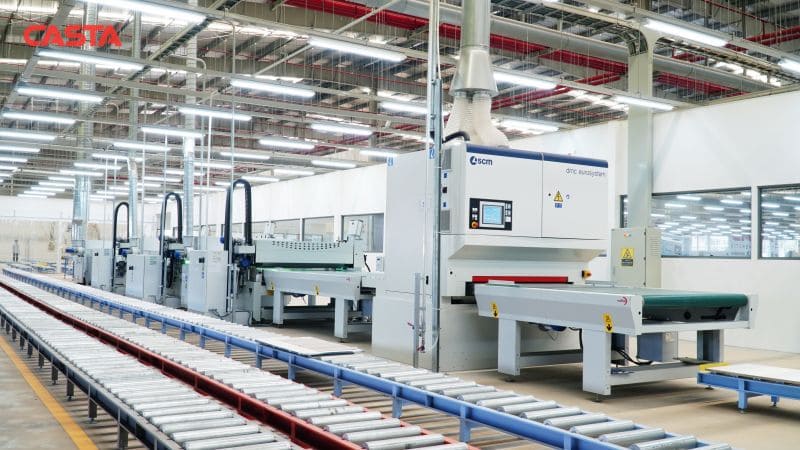
1.3 Diverse Materials and Cabinet Styles
If you’re unsure how to buy kitchen cabinets that match specific design needs, Vietnam offers unmatched flexibility. Manufacturers can replicate nearly any cabinet style or finish, from budget-conscious laminates to high-end painted MDF.
- Materials: MDF, plywood, HDF, veneer-core, particle board.
- Styles: Shaker, slab, raised panel, frameless Euro, glass-front.
- Finishes: Thermofoil, acrylic, high-gloss lacquer, textured melamine.
Whether you're outfitting 500 modern units or building luxury kitchens, Vietnam's adaptability makes sourcing easier.
Learn more: Types of kitchen cabinets materials
1.4 Health & Safety Certifications
One of the most important parts of learning how to buy kitchen cabinets internationally is compliance. Vietnam-based manufacturers like Casta Cabinetry offer:
- CARB Phase 2: ≤ 0.05 ppm formaldehyde emissions.
- FSC: Certified wood sourcing and chain-of-custody.
- E1 Standard (EU): ≤ 0.1 ppm VOC emissions.
This ensures safety for residential, commercial, and hospitality environments and eliminates surprises during import or inspection.
1.5 High Volume Production Capacity
Need 1,000 kitchens next quarter? Vietnam’s large factories are built to handle volume. Leading cabinet exporters ship 100–200 containers per month, making them ideal partners for contractors or retailers scaling operations.
- Bulk consistency across thousands of units.
- OEM/ODM programs tailor-fit to North American standards.
This scale is essential for anyone asking where to buy kitchen cabinets with high repeatability and fast turnaround.
1.6 Fast, Predictable Lead Times
Many North American buyers struggle with how to buy kitchen cabinets quickly when local shops are backlogged. Vietnam’s export infrastructure offers dependable 25–40 day lead times from order to port departure.
- Pre-planned production calendars.
- Integrated CAD and ERP systems ensure timeline accuracy.
This is ideal for project managers under tight construction deadlines.
Learn more: Lead Times & Supply Chain Resilience: Navigating Potential Disruptions
1.7 Favorable Trade Terms and Logistics
Vietnam is not subject to the same anti-dumping duties affecting Chinese imports. This makes it a safer, more stable option for companies navigating how to buy kitchen cabinets internationally.
- Direct shipping to U.S. East and West Coast ports (Cai Mep, Cat Lai, Hai Phong).
- Export-ready documents (packing lists, MSDS, origin certs) simplify customs clearance.
- English-speaking support staff streamline communication and compliance.
1.8 Comparison Table: Domestic vs Vietnam Sourcing
| Feature | U.S. Domestic Cabinets | Vietnam-Imported Cabinets |
| Price / Linear Foot | $200–$400 | $120–$280 (landed) |
| Finish Consistency | Varies by workshop | High – CNC precision |
| Certifications | Must verify each supplier | CARB P2, FSC, E1 pre-certified |
| Lead Time | 6–12 weeks | 25–40 days |
| Volume Scalability | Limited | 100–200 containers/month |
| Customization Options | Shop-dependent | OEM/ODM standard |
| Logistics Support | Local only | Export-ready packaging + documents |
| Ideal Use Case | 1-off custom builds | Retailers, contractors, B2B buyers |
2. Case Study: How a U.S. Brand Scaled Quickly with Vietnamese Cabinet Supply
For many brands expanding across the U.S. market, understanding how to buy kitchen cabinets at scale—without sacrificing quality or compliance—is a real challenge. One of our international clients faced this exact situation.
They needed a total of 1,200 kitchen cabinets, combining flat-panel and Shaker styles, and the order was split evenly between ready-to-assemble (RTA) and pre-assembled units. The requirements were specific: certified materials, fast production, and a firm deadline of 45 days.
By working with Casta Cabinetry, they were able to:
- Complete production and loading of 8 containers within just 32 days
- Achieve less than 0.5% dimensional deviation across all units, which minimized on-site adjustments
- Receive full documentation for CARB Phase 2, FSC, and E1 standards—essential for U.S. import and distribution
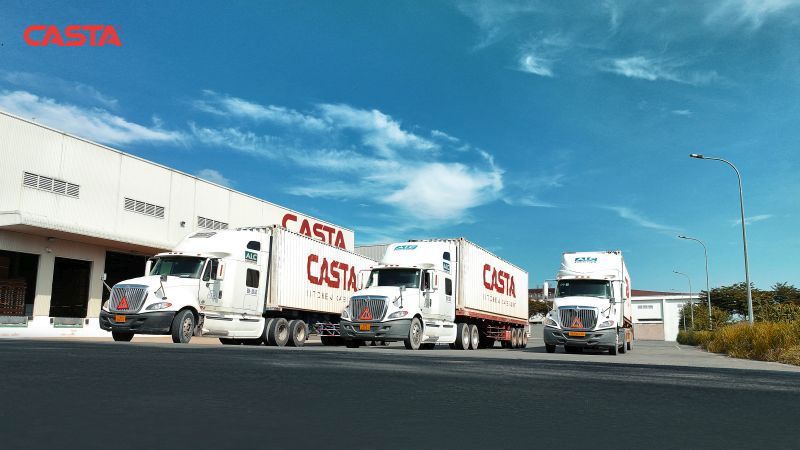
The project illustrates more than just efficient logistics. It demonstrates what’s possible when you know how to buy kitchen cabinets through a supplier that understands U.S. quality benchmarks, building codes, and commercial timeframes.
In many cases, brands struggle to find the balance between cost, reliability, and certification. For this client, Vietnam became the answer—and Casta delivered.
If you’re navigating how to buy kitchen cabinets for retail programs, builder-grade projects, or premium custom lines, choosing the right supply partner is where it starts. And as this case shows, Vietnamese manufacturing—done right—can offer both speed and quality.
3. Step-by-Step: How to Buy Kitchen Cabinets from Vietnam
For U.S. contractors, developers, and cabinet brands sourcing internationally for the first time, understanding how to buy kitchen cabinets from Vietnam may feel complex. But when the right process is in place, it becomes clear, predictable, and manageable.
Here’s how Casta Cabinetry helps streamline each stage:
Submit Specifications
The first step in how to buy kitchen cabinets is clarity. Clients provide basic layout files, desired cabinet styles (such as Shaker, slab, or raised panel), finish preferences, and unit quantities. Our team can work with sketches, 3D renders, or architectural files—whatever is available.
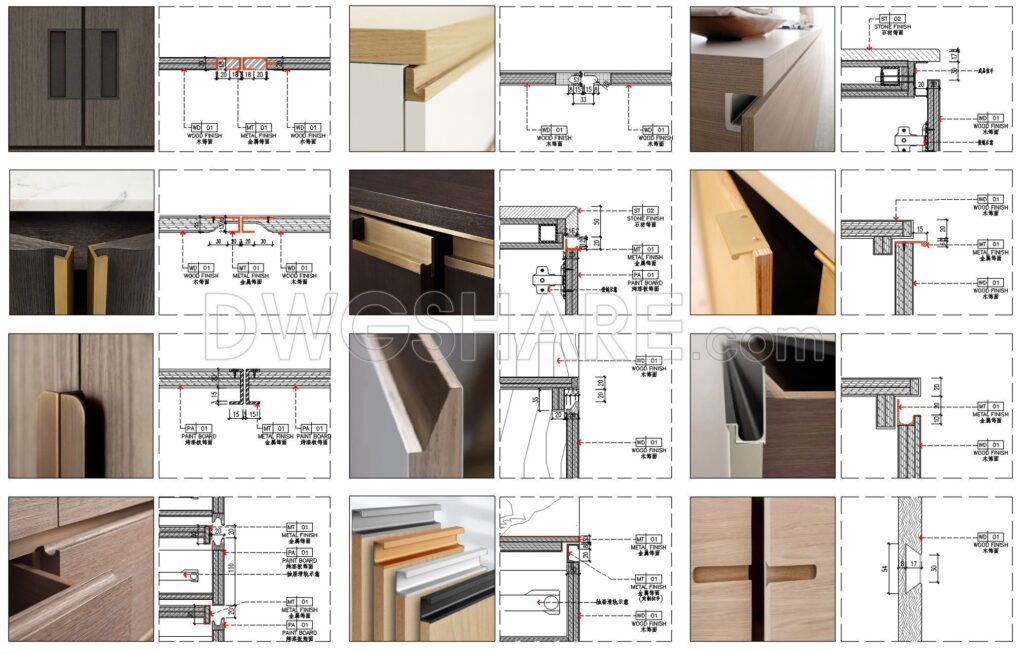
Receive Samples
To validate quality and style, physical samples are produced and shipped within 7–10 days. These often include cabinet doors, hardware samples, and complete mini-units. This allows brands to confirm exactly what end customers will receive before committing to production.
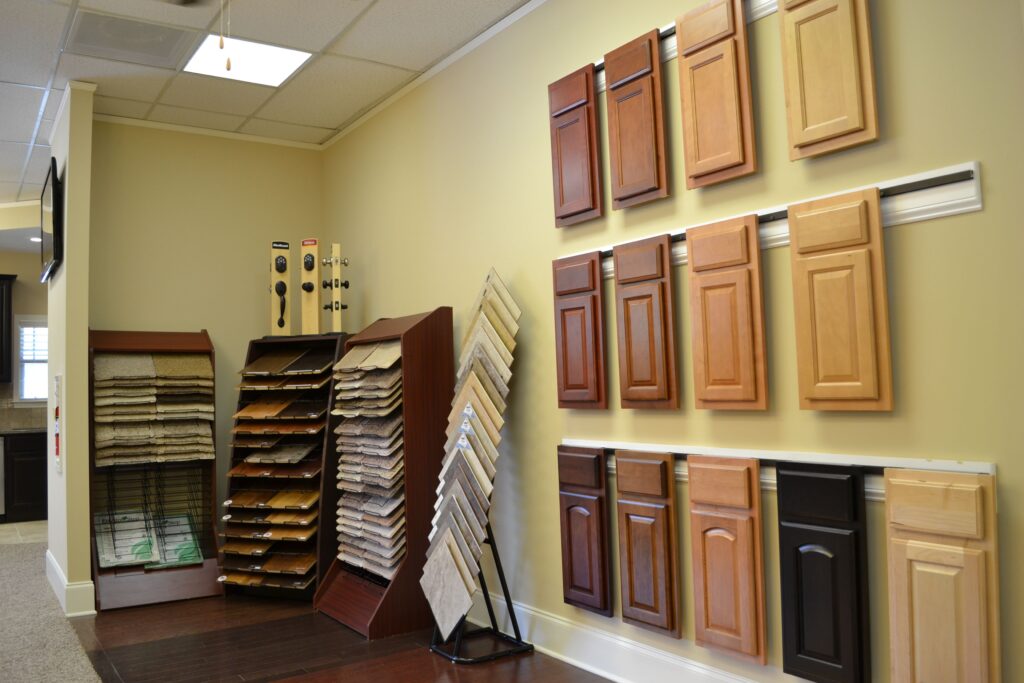
Finalize Purchase Order
Once samples are approved, all production details are locked in. SKUs, edge banding, packaging requirements, and finishing notes are documented. The minimum order quantity (MOQ) typically begins at one 40-foot container, making it accessible for small and mid-sized programs.
Production & Quality Control
The production phase is transparent and hands-on. Clients receive live updates, production photos, and inline QC reporting. All orders are subject to dimensional and finish inspections to ensure specifications are consistently met.
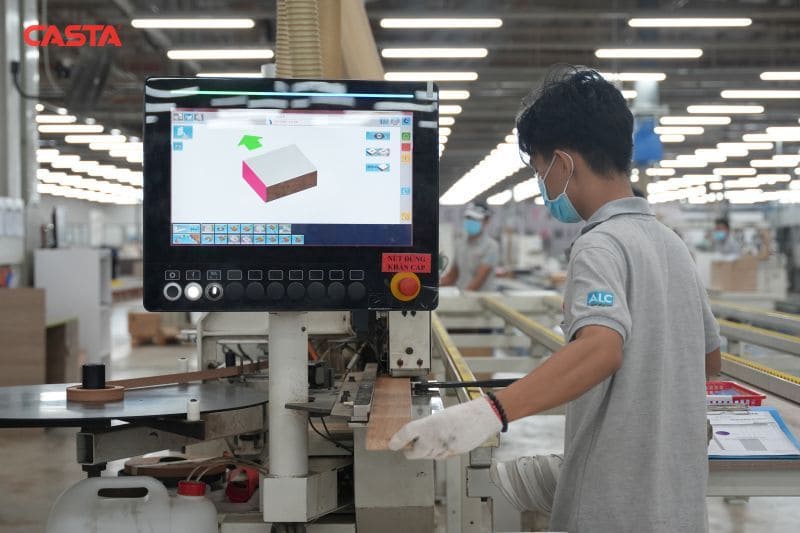
Export Coordination
Our team manages all necessary documentation: commercial invoices, packing lists, HS codes, crating standards, and inspection certificates. For first-time importers, we walk through every document to ensure a smooth customs process.
Shipping
Transit to North America usually takes 25–40 days, depending on the final destination and shipping method. Casta partners with established freight carriers to provide reliable and traceable delivery.
Delivery & Post-Sale Support
Upon arrival, our support doesn’t end. We assist with door-to-door logistics, offloading coordination, and resolving any post-delivery concerns. Reorder terms are kept flexible to help brands scale steadily and respond to demand.
For companies evaluating how to buy kitchen cabinets overseas, this structure offers more than convenience—it offers control, clarity, and confidence. With the right partner, global cabinet sourcing becomes a process, not a risk.
Learn more: How to buy kitchen cabinets wholesale
4. Market Comparison: Vietnam vs China vs U.S./Canada vs Malaysia
When evaluating how to buy kitchen cabinets for large-scale or recurring projects, comparing production regions is a key step. Buyers need to balance cost, capacity, compliance, and consistency—all of which vary significantly by country.
Below is a direct comparison of four major cabinet-producing regions:
| Feature | Vietnam | China | Malaysia | U.S./Canada |
| Price (per lft) | $150–$250 | $170–$270 | $190–$290 | $250–$400 |
| CNC / Automation | SCM / HOMAG | Varies | Mostly manual | SCM / CNC (select shops) |
| MOQs | 1–50+ containers | Often min 1 container | Moderate | Low-volume runs |
| Lead Time | 25–40 days | 30–50 days | 30–45 days | 14–21 days |
| Emission Certs | Full CARB / E1 / FSC | Variable | Variable | Full standard |
| Export Logistics | Export-ready support | Varies | Varies | Local delivery only |
Vietnam’s cabinet manufacturing sector continues to outperform competitors when it comes to meeting the needs of North American importers—especially those learning how to buy kitchen cabinets at scale without compromising on environmental or quality standards.
Vietnam offers:
- Cost-effective pricing: Lower labor costs, reduced overhead, and optimized raw material sourcing make Vietnam one of the most competitive pricing options, without cutting corners on quality.
- Automation and precision: With widespread use of SCM and HOMAG equipment, manufacturers in Vietnam offer consistently accurate panel cuts, edge banding, and finishing.
- Flexible MOQs: Whether ordering one container for a showroom refresh or 30+ containers for multi-site builds, production is scalable.
- Certified compliance: Full documentation for CARB Phase 2, E1, and FSC is standard—not a paid upgrade.
- Reliable export support: Many Vietnamese manufacturers now operate with export-first processes, including pre-shipment inspections, sturdy crating, and assistance with customs paperwork.
For procurement managers asking how to buy kitchen cabinets with dependable quality, predictable timelines, and export-ready processes, Vietnam offers one of the most well-rounded supply chains available today.
This comparison not only highlights price points but also reflects long-term sourcing efficiency. As supply chains evolve post-2020, businesses looking to build or expand cabinet programs increasingly look to Vietnam—not just for lower cost, but for a smoother overall buying experience.
Learn more: Vietnam vs China Cabinet Manufacturers: A Comparative Analysis
5. Best Cabinet Types to Source from Vietnam
Understanding how to buy kitchen cabinets effectively also means knowing which product types deliver the most value when sourced from Vietnam. Thanks to Vietnam’s streamlined supply chain, CNC-ready manufacturing, and material sourcing flexibility, certain cabinet styles stand out as especially suited for export.
Here are the most popular cabinet categories that U.S. and Canadian importers source from Vietnamese manufacturers:
5.1 Flat Panel Cabinets
Best for: RTA lines, multi-family housing, and price-sensitive markets
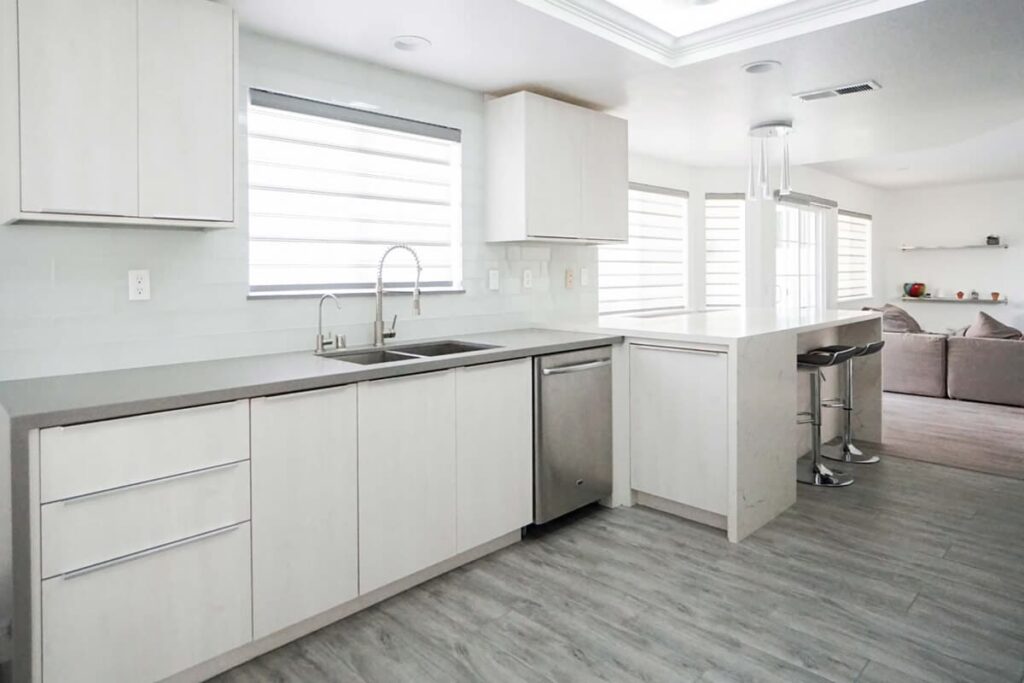
Flat panel cabinets are among the most efficient to produce—and among the most cost-effective to import. These styles work well for ready-to-assemble programs and large-scale property developments where clean lines and reliable durability are priorities.
- CNC-friendly designs support fast turnaround and dimensional consistency
- Cost-saving finishes like matte lacquer, melamine, or UV help keep unit pricing highly competitive
- Easy to stack, package, and reassemble at the job site, reducing shipping volume and labor costs
For brands learning how to buy kitchen cabinets for high-volume projects, flat panel doors often become the entry point into Vietnam’s cabinet supply chain.
5.2 Painted MDF Shaker Doors
Best for: Semi-custom residential builds and showroom lines
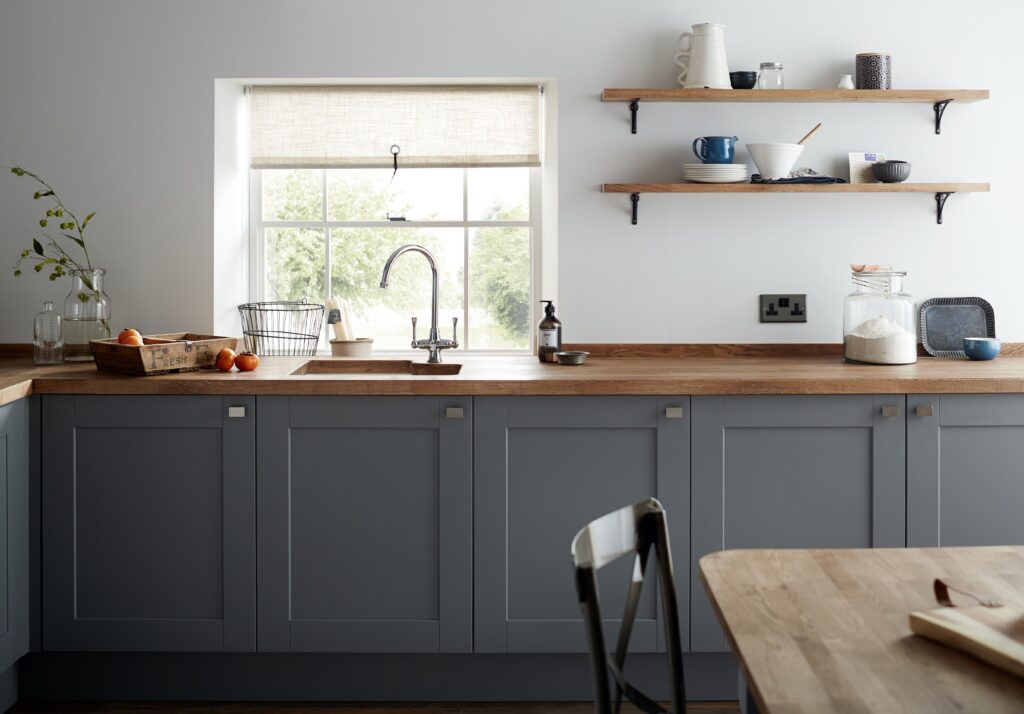
Shaker doors made from high-density MDF provide a smooth painting surface and crisp detailing. Vietnam excels at this category due to its high-end paint lines and certified MDF supply.
- CARB Phase 2-compliant MDF and finishes for safe residential use
- Available in solid color or glazed finishes, with soft-close options
- Ideal for brands seeking a balance between classic design and modern manufacturing efficiency
These doors continue to be one of the most requested cabinet components by retailers and builders exploring how to buy kitchen cabinets that match U.S. design trends without the domestic price tag.
5.3 Thermofoil Cabinet Doors
Best for: Budget-conscious developments, multi-unit orders
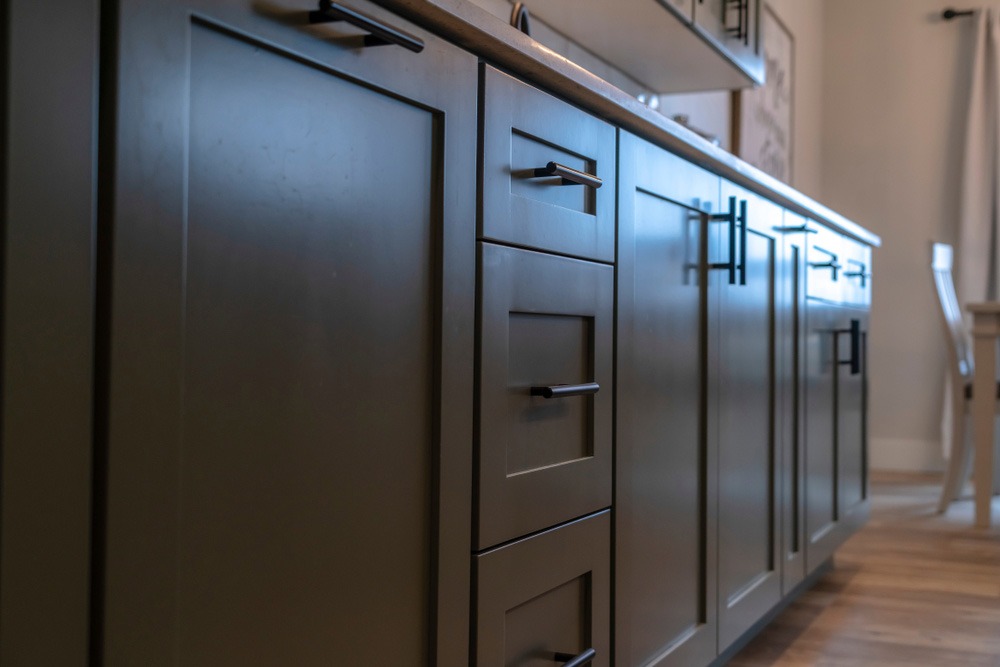
Thermofoil doors allow developers to maintain visual appeal while staying on budget. Vietnam’s manufacturers offer high-capacity production with wide finish selections—from glossy white to textured woodgrain looks.
- Durable, moisture-resistant surfaces ideal for kitchens and laundry spaces
- Excellent for mass-market housing or entry-tier product lines
- High output per container helps reduce cost per unit across projects
For buyers asking how to buy kitchen cabinets that offer strong margins without aesthetic compromise, thermofoil is a strategic product line to consider.
5.4 Glass Front Doors
Best for: Hospitality builds, upscale residential kits, or accent cabinets
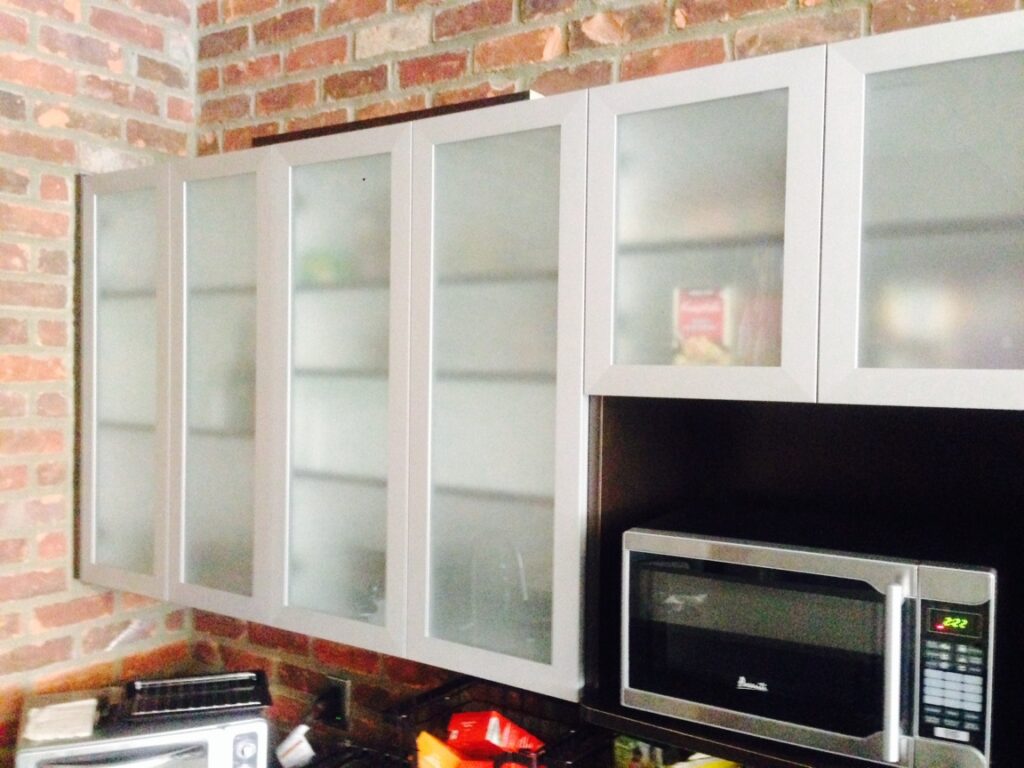
Glass-front doors elevate standard cabinetry with a premium feel. Vietnamese suppliers offer both solid-wood and aluminum framing, paired with custom glass options like reeded, frosted, or clear.
- Aesthetic flexibility for modern or transitional kitchen themes
- Modular inserts for shelving displays or built-in lighting
- Commonly included in showroom-ready or boutique home packages
Sourcing glass cabinet doors from Vietnam provides U.S. brands with the upscale design elements needed to round out premium kitchen lines while maintaining supply control.
5.5 Vanities & Closet Systems
Best for: Diversifying product lines beyond kitchens
Bathroom vanities and modular closet systems are rapidly growing categories in Vietnam’s export portfolio. These items are often produced alongside kitchen orders, offering cost and shipping efficiency.
- Moisture-resistant MDF core with melamine or PU finishes
- Modular sizing for simplified installation
- Great for cross-selling to existing kitchen cabinet clients
For companies navigating how to buy kitchen cabinets and expand into adjacent categories, vanities and closets are smart add-ons that support higher average order values with the same trusted supply base.
6. Total Landing Cost Analysis When Buying Kitchen Cabinets from Vietnam
Understanding how to buy kitchen cabinets effectively isn’t just about choosing the right product—it’s also about calculating the true landed cost. For North American contractors, cabinet brands, and procurement teams, making accurate cost projections across sourcing, freight, and customs is essential to maintaining profitability.
Below is a practical breakdown of typical cost elements when sourcing cabinets from Vietnam:
| Cost Category | Description | Estimated Range (USD) |
| Ex-Factory Price | Unit cost for finished cabinet from supplier (flat panel, shaker, etc.) | $45–$120 per cabinet, depending on spec |
| Packing & Loading | Crating, labeling by room/unit, moisture protection | $2–$5 per cabinet |
| Sea Freight (40-ft HC) | Based on 700–1000 cabinets per container, depending on RTA or assembled | $2,500–$4,000 per container |
| Import Duties & Tariffs | Vietnam benefits from favorable U.S. trade terms (no China 301 tariffs) | 0%–4% depending on material classification |
| Port Handling & Trucking | Drayage, unloading, and last-mile delivery to warehouse or job site | $400–$850 per container |
| Total Landed Cost | All-in cost including cabinet + logistics | $65–$160 per cabinet, on average |
Key Tips to Manage Landing Costs:
- Order in Full Container Loads (FCL): Whether RTA or pre-assembled, full containers significantly reduce per-unit freight costs. Casta Cabinetry offers optimized loading plans to help you maximize volume.
- Plan for Clearance: Casta provides complete documentation (FSC, CARB P2, fumigation, etc.), ensuring your container clears U.S. customs without costly delays.
- Use Consolidated Shipments: For brands learning how to buy kitchen cabinets across multiple SKUs or locations, consolidated container shipments allow you to fulfill phased installs efficiently without duplicate fees.
- Budget for Assembly Labor: If sourcing RTA cabinets, factor in assembly cost at destination—this usually adds $8–$15 per unit depending on your team’s speed and volume.
Why This Matters
Learning how to buy kitchen cabinets wisely means factoring in these hidden costs during the planning phase to avoid budget surprises. It enables fair comparisons between Vietnam, China, and U.S. sourcing by looking at total cost per installed cabinet—not just ex-factory prices.
7. Mistakes to Avoid When Sourcing from Vietnam
While Vietnam is a top destination for high-quality, cost-effective cabinet manufacturing, understanding how to buy kitchen cabinets successfully means being aware of the common pitfalls that can affect delivery, compliance, and quality. For first-time importers or growing brands, these mistakes can lead to unexpected delays and costly revisions.
Here are some of the most frequent sourcing errors—and how to avoid them:
Skipping Certification Documentation
Certifications such as CARB Phase 2, E1, and FSC are often mandatory for cabinets sold or installed in North America, especially in California and Canada. Some importers make the mistake of assuming these documents will be included without verifying in advance.
- Always confirm which certifications are required for your market
- Ensure that test reports and factory certifications are available before finalizing the purchase order
- Review documents during pre-shipment—not just after containers are on the water
If you're serious about how to buy kitchen cabinets for retail or commercial use, documentation isn’t optional—it’s foundational.
Ignoring Packaging Specifications
Not all manufacturers pack the same way. Choosing between knock-down (KD) and fully assembled units impacts freight cost, risk of damage, and ease of installation.
- KD cabinets reduce shipping volume but require assembly expertise
- Assembled units may arrive ready to install but take up more container space
- Ensure that packaging includes corner protection, carton labeling, and water resistance
Buyers learning how to buy kitchen cabinets from overseas often overlook packaging, but it's a key part of ensuring the final product arrives intact.
Learn more: ISTA Package Testing Standards
Relying on Small Shops Without Automation
Vietnam has thousands of workshops, but not all are equipped for export-level production. Sourcing from a small or unverified shop may result in inconsistent finishes, slower output, and poor dimensional accuracy.
- Look for factories using SCM, HOMAG, or similar CNC equipment
- Ask for production line photos, quality control steps, and past export references
- Be cautious of vendors that rely entirely on manual labor for cabinet doors or panel sizing
Understanding how to buy kitchen cabinets at scale means choosing partners with the right infrastructure, not just the lowest quote.
Underestimating Lead Time for Container Scheduling
Even with fast production cycles, port congestion, container availability, and local holidays can impact shipping schedules.
- Always build in a 2–3 week buffer on top of the production lead time
- Confirm logistics capacity early—especially during Q4 or before Tet holiday
- Align your internal launch schedules with realistic transit and customs windows
If your team is exploring how to buy kitchen cabinets for a product launch or property handover, missing your logistics timeline can quickly erode the cost savings of overseas sourcing.
Learn more: Logistics & Import: Streamlining the Shipping and Customs Process
8. Why Work with Casta Cabinetry
When North American contractors and cabinet brands begin researching how to buy kitchen cabinets from overseas, the biggest concern is finding a partner that balances quality, precision, and reliable service. That’s exactly where Casta Cabinetry stands out.
With more than a decade of manufacturing experience and a growing portfolio of international clients, Casta has positioned itself as a trusted supplier for brands across the U.S. and Canada—whether for retail programs, builder-grade projects, or custom lines.
100,000 m² Smart Factory
Casta’s modern production facility is purpose-built for high-volume international orders. The large footprint allows for dedicated RTA lines, pre-assembled production zones, and paint booths—all under one roof. This setup helps reduce delays and manage projects of all scales without bottlenecks.
SCM/HOMAG CNC Lines with ±0.1 mm Accuracy
For buyers learning how to buy kitchen cabinets that meet strict dimensional requirements, automated machinery matters. Casta uses advanced CNC technology from SCM and HOMAG to ensure consistency, tight tolerances, and repeatable results across every unit and every order.
Certified Materials and Finishes
Casta offers fully documented CARB Phase 2, FSC, and E1 compliance. Whether you're supplying kitchen cabinets to a California home builder or a Canadian retail chain, these certifications are critical for market access and consumer trust.
Learn more: Casta’s ISO-Qualified Cabinet Certification: Setting the Gold Standard for Quality and Reliability
98%+ On-Time Delivery Rate
Timelines are critical in large-scale rollouts and multi-unit developments. Casta’s average on-time delivery rate exceeds 98%, thanks to its in-house project coordination and transparent milestone tracking throughout production and shipping.
Learn more: Casta’s Outstanding International Projects
End-to-End Export Logistics Support
Knowing how to buy kitchen cabinets is only part of the equation—executing the export is just as important. Casta manages everything from crating and packing to container loading, customs documentation, and shipment tracking. For first-time importers, this level of support reduces friction and eliminates guesswork.
Dedicated North American Account Support
Communication can make or break an international sourcing relationship. Casta provides responsive, English-speaking account managers who understand the nuances of North American timelines, expectations, and codes. Every project is assigned a point of contact to ensure details aren’t lost between emails.
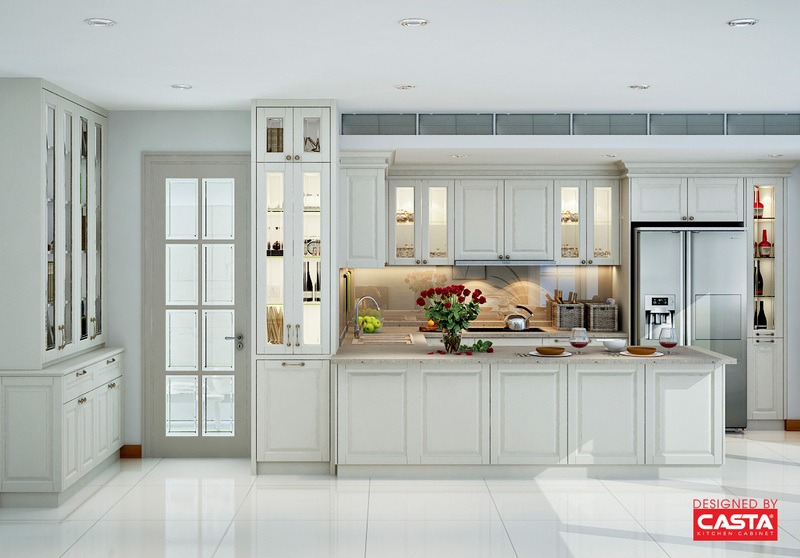
For teams exploring how to buy kitchen cabinets from Vietnam, Casta Cabinetry offers more than just competitive pricing. We offer peace of mind, a track record of success, and a process built around long-term partnerships—not one-off transactions.
9. Turn Sourcing into a Scalable Strategy
For North American contractors, cabinet brands, and procurement managers, understanding how to buy kitchen cabinets is more than just a procurement task—it’s a strategic decision that impacts cost, timelines, and brand consistency. As this guide has shown, sourcing from Vietnam offers a rare combination of affordability, precision, certification, and logistical support.
Whether you're launching a new product line, scaling across multiple locations, or replacing a complex domestic supply chain, the key isn’t just asking how to buy kitchen cabinets—it’s choosing the right partner who can grow with you over time and adapt to evolving project needs.
With Casta Cabinetry, you’re not just getting a manufacturer. You’re gaining a hands-on sourcing team, built for North American standards, that makes the entire process—from sampling to post-delivery—clear, trackable, and repeatable.
10. Frequently Asked Questions
Is importing cheaper than buying in the U.S.?
Will cabinets from Vietnam meet U.S. codes?
Can I order custom cabinets?
What's the lead time?
How do I get started?
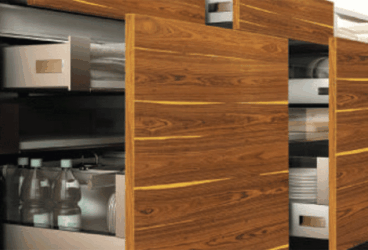
MDF vs Plywood for Kitchen Cabinets – Which is Better?...
MDF vs Plywood for kitchen cabinets is one of the most important decisions contractors and furniture brands must make wh...
11/14/2025 | David Nguyen
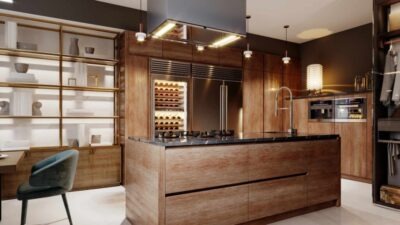
Plywood Kitchen Cabinets: Pros and Cons Explained for Contra...
Plywood kitchen cabinets are now one of the most preferred options in modern kitchen manufacturing, combining durability...
11/12/2025 | David Nguyen
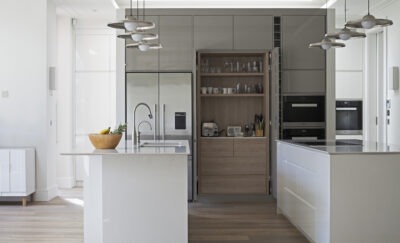
Best Italian Kitchen Cabinets: Modern Design, Precision Craf...
Italian kitchen cabinets represent the gold standard in modern kitchen design — celebrated for their craftsmanship, slee...
10/29/2025 | David Nguyen
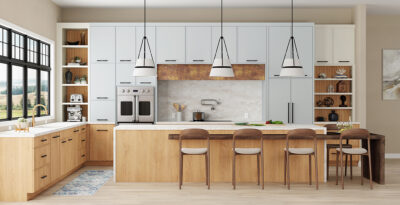
European vs American Kitchen Cabinets: Key Differences &...
European vs American kitchen cabinets is a core decision for anyone specifying cabinetry for modern buildings or homes. ...
10/27/2025 | David Nguyen
Contact us
Casta is always ready to listen and answer all customers' questions
